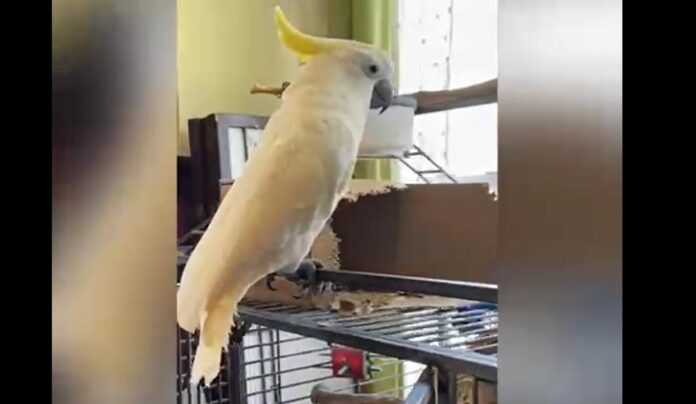Everyone is aware that parrots acquire human speech, despite the fact that most animals do not learn their own vocalizations and parrots are great imitators of human language.
But, how big is the vocabulary of various parrot species? Do males talk more? Does a parrot’s vocabulary grow as they get older?
New research published today in the Nature journal Scientific Reports contributes to our understanding of animal vocal learning by offering the most comprehensive comparative analysis of parrot vocal repertoires to date.
The paper shows how vocal mimicry differs between species, how many parrots use words when it makes sense, and how important crowd-sourced data can be.
Data were gathered as part of the “What does Polly Say?” community science initiative. People who live with companion parrots told how many human “words” and “phrases” their parrots use, as well as sounds associated with humans (like whistling a tune) and how sounds are used in different situations. With this method, researchers were able to get standardized data on how nearly 900 parrots from 73 species learned to talk, which would have been impossible to do with wild parrots.
This is what the scientists from UNC and UPJ discovered:
Species matter— “As it turns out,” adds co-author Lauryn Benedict, “Polly’s species might have a strong impact on what she says.”
Some species are much better at imitating other species than others. African grey parrots, which have long been thought to be the best at picking up human sounds, were found to know an average of 60 human words.
The typical vocabulary of a cockatoo, amazon, or macaw was 20 to 30 words, making them outstanding mimics. A few animals, such as Cockatiels and Fischer’s Lovebirds, absorbed more human sounds than words.
The results of the research indicate that age and sex are poor predictors of vocal imitation, suggesting that it is mostly the result of learning. Analyses based on age showed that children’s repertoires grew until they reached adulthood, but then they stopped growing. Birds that were 50 years old did not have more songs than birds that were 5 years old.
Sex-based analysis revealed that most species’ males and females were equally skilled mimics. The Pacific Parrotlet, among which only males were known to “talk,” Budgerigars, in which males had a bigger vocal repertoire, and Yellow-headed Amazons, among which females learnt more noises, are notable outliers.
Even though most males and females were just as good at imitating humans as each other, the researchers found that birds of unknown gender were more often marked as male (74%). They came to the conclusion that most people who live with parrots of unknown gender think those birds are male, even though this is often not the case.
Parrots have a sense of timing — According to human surveyors, a very high number of companion parrots (89%) spontaneously adopted human mimicry in ideal circumstances, with the majority of birds doing so regularly.
According to the study, parrots learn both what to say and when to say it.
“This research highlights just how much parrots still have to teach us,” adds co-author Christine Dahlin. “Approximately 30% of parrot species in the wild are declining to the point of being threatened, endangered or critically endangered, primarily from poaching and habitat loss. Without conservation of remaining populations, we risk losing the opportunity to understand the evolution of complex communication in these amazing animals.”
As animals that learn to talk, parrots are important research subjects for learning about the physiological, neurobiological, and evolutionary bases of sound communication in animals. It is clear that both pet parrots and wild parrots use vocal mimicry to help them get around their social and mental worlds. The differences between species and between the sexes that this research found can lead to new lines of research and a better understanding of parrots.
Source: 10.1038/s41598-022-24335-x
